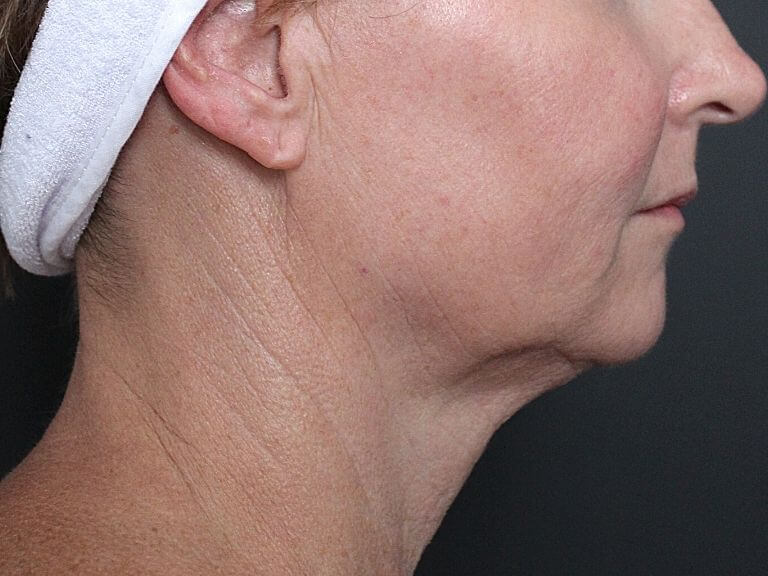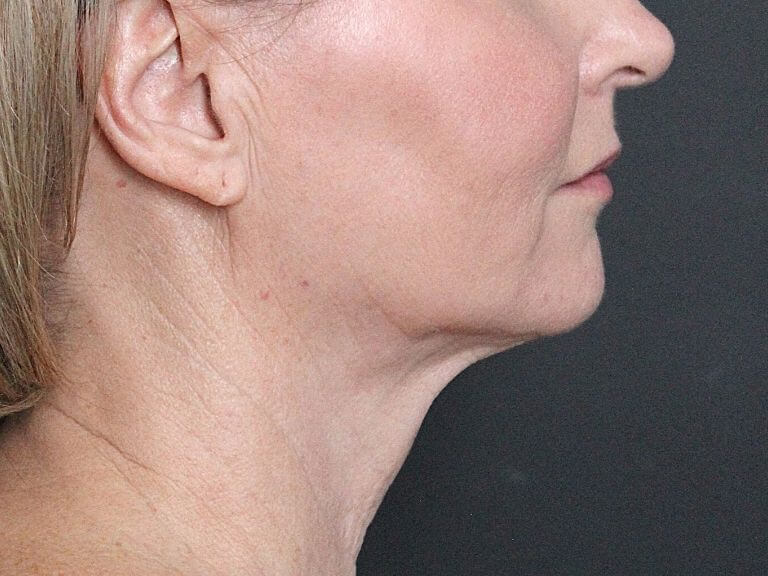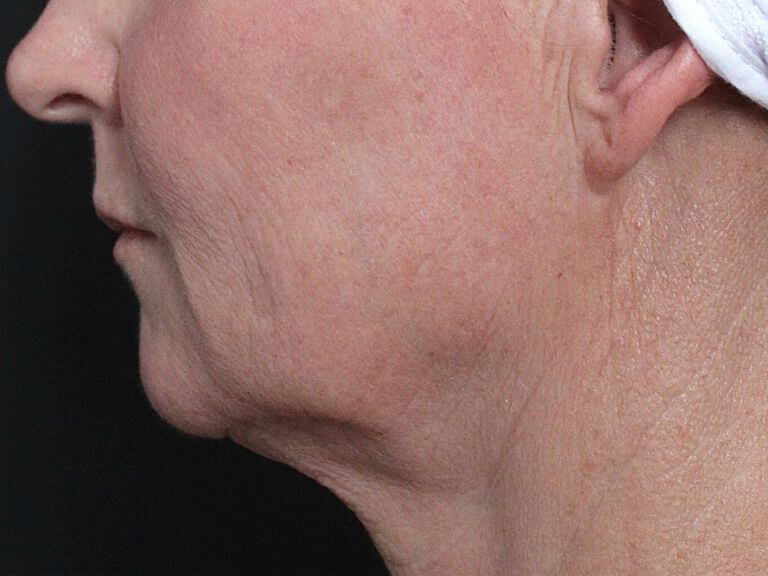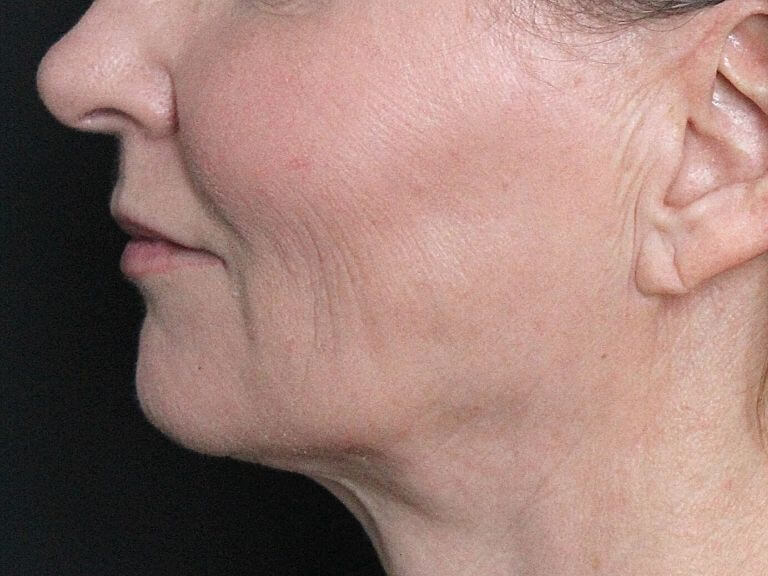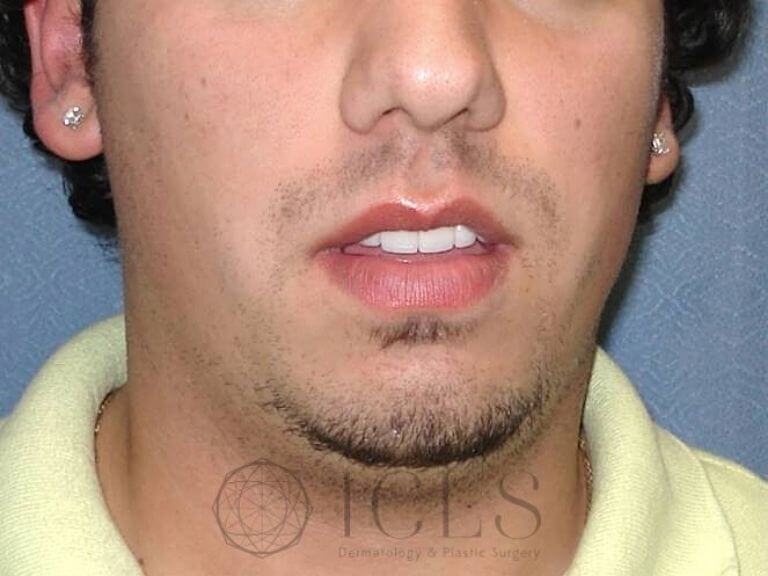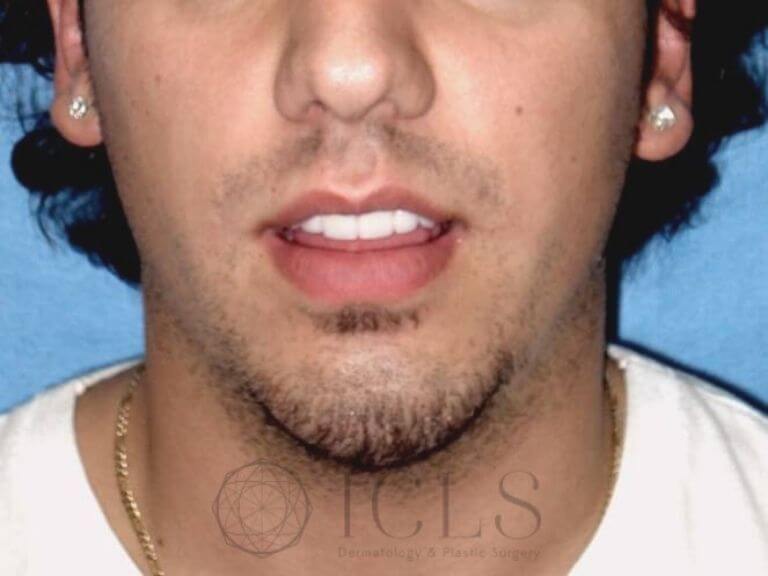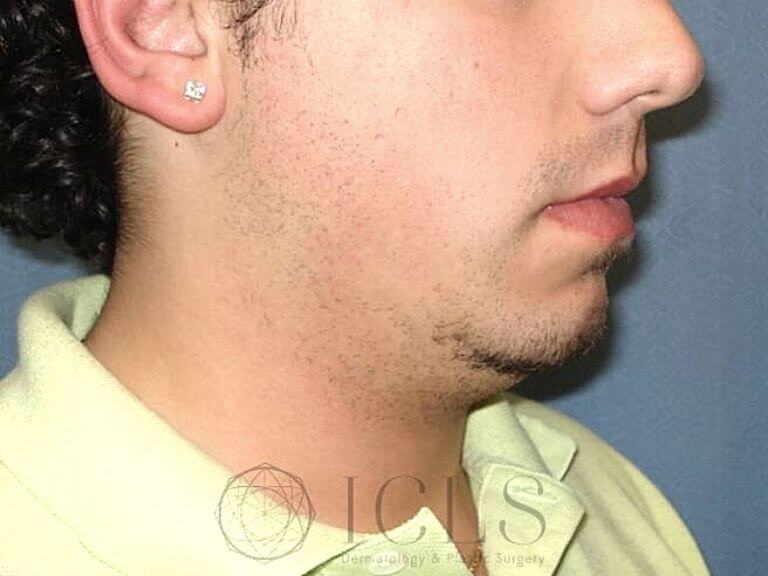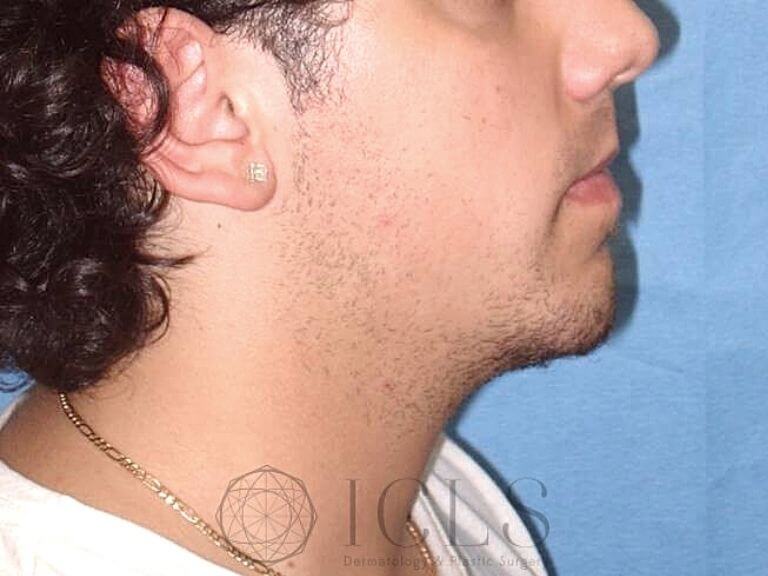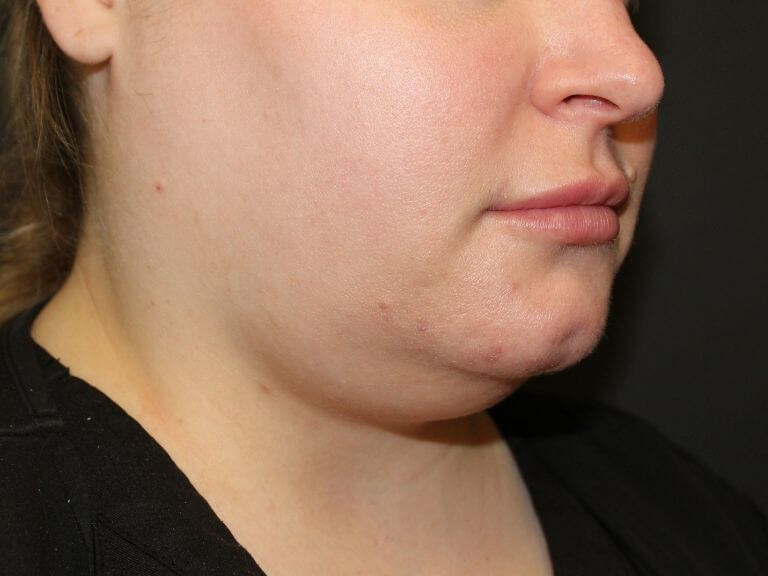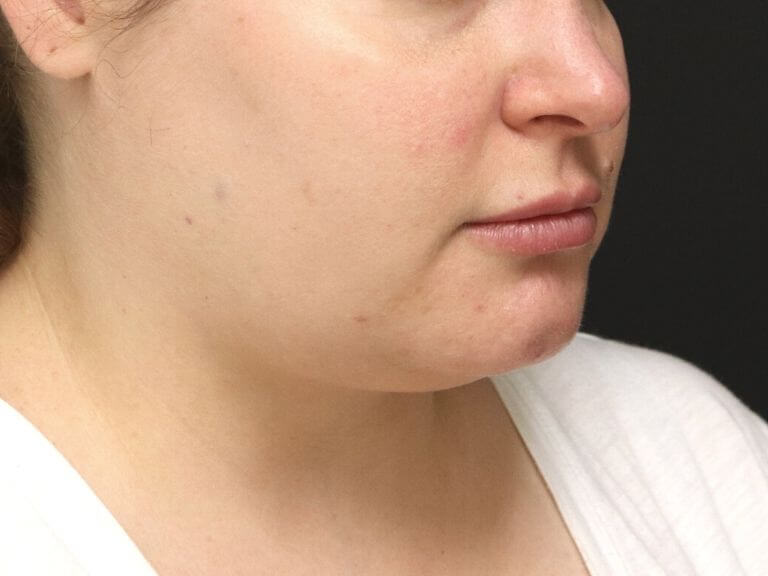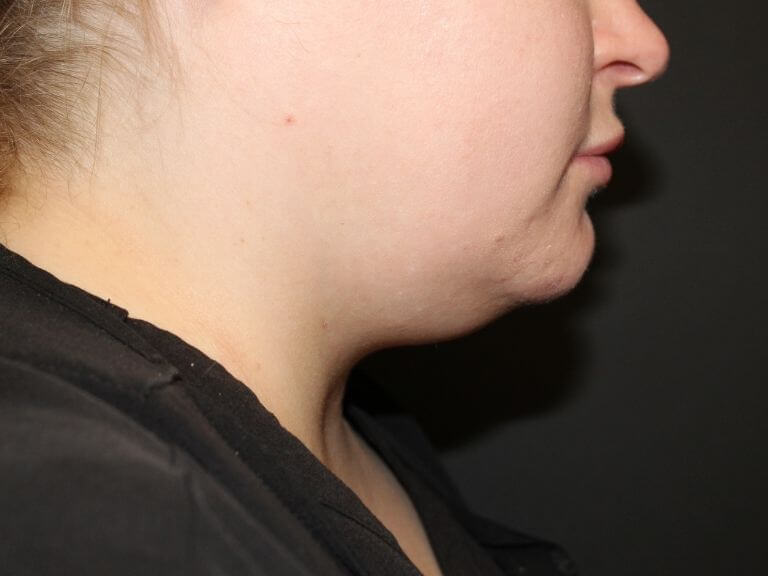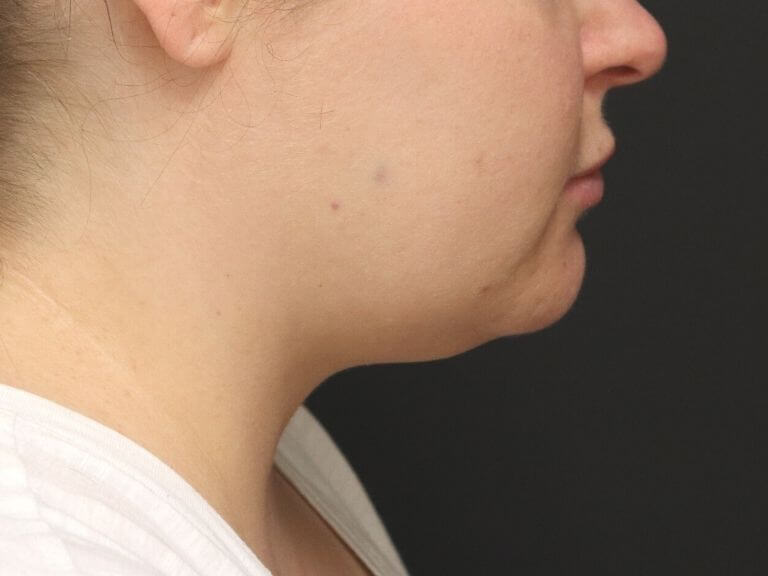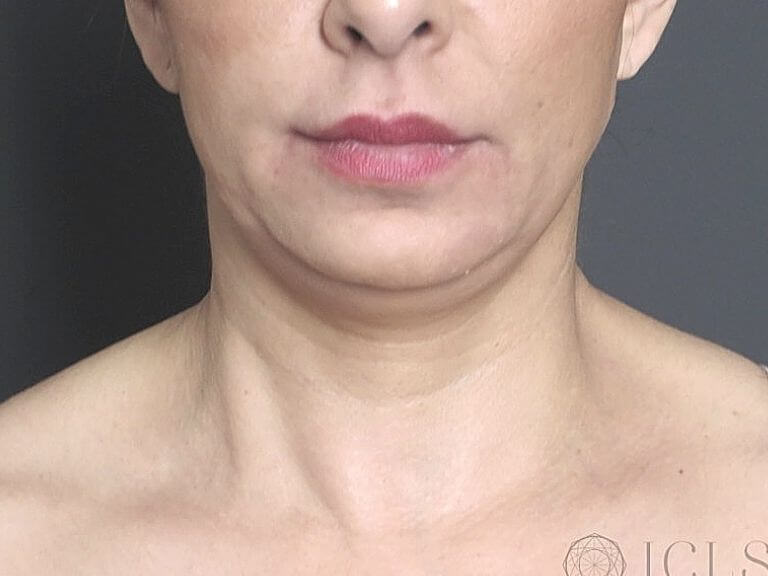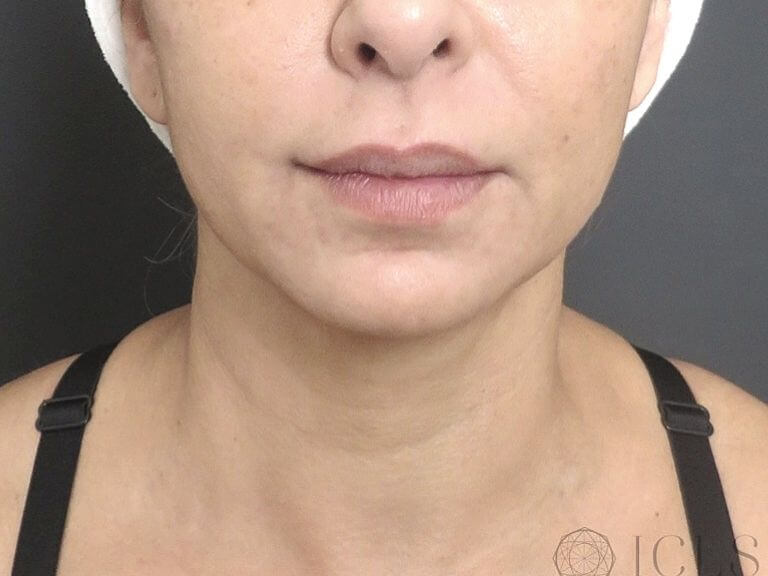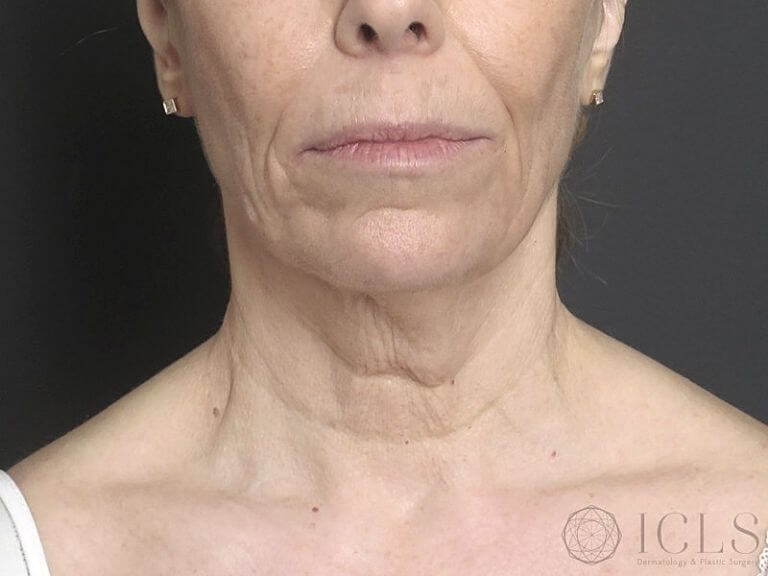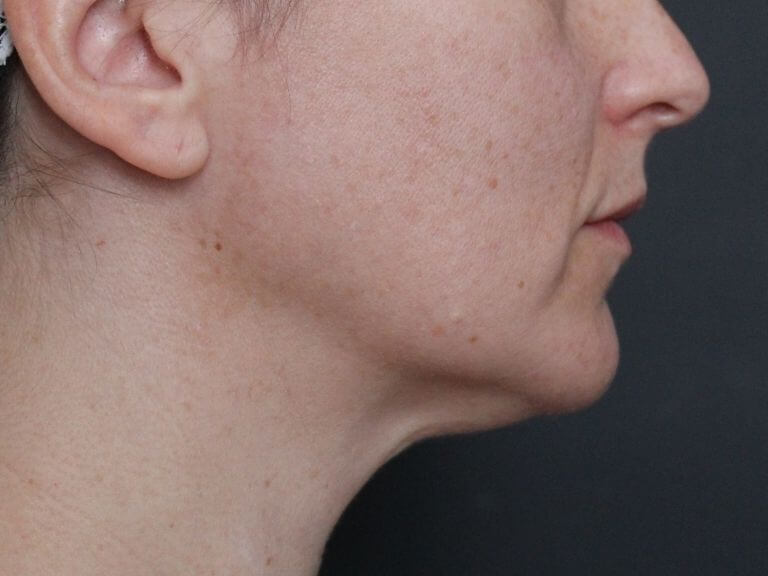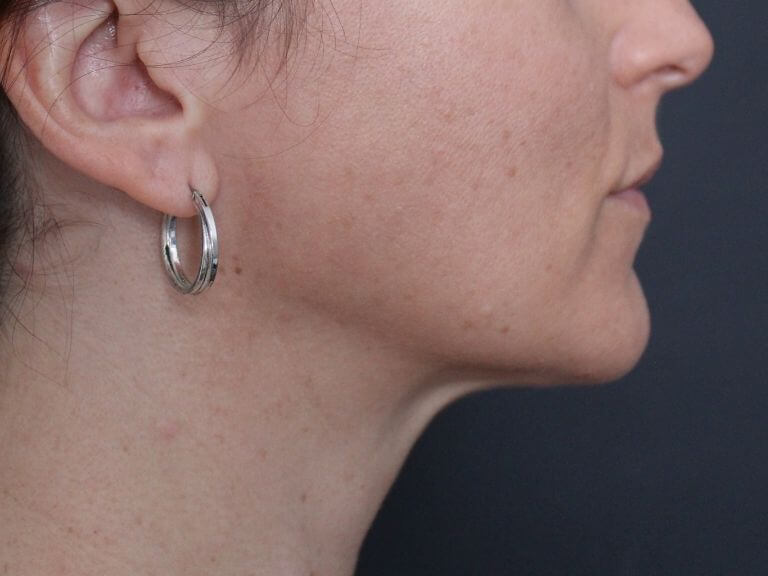Chin Enhancement in Oakville, Ontario
At ICLS the most popular method for removing fatty deposits under the chin and contouring jawline area is through submental liposuction. Less invasive options for chin enhancement using CoolSculpting®; Belkyra™, a fat-dissolving injectable; or cosmetic fillers to enhance the appearance of the jawline.
The submental liposuction procedure is performed under local anesthesia using the VASERlipo System, a minimally invasive ultrasound device that is a revolution in aesthetic body contouring. Additional skin tightening with radiofrequency may also be recommended for best results.
Patients looking for more balance in their facial features may benefit from a chin implant. A chin implant is made of a synthetic material that feels much like the natural tissue found in the chin. Submental or under the chin liposuction may also be recommended to enhance the final outcome, and to give better contour during this facial reconstruction.

Why Choose ICLS for Chin Enhancement?
Patients from Oakville and the Greater Toronto Area, including Toronto, Mississauga, Burlington, and Hamilton, choose ICLS for chin enhancement due to Dr. Khanna’s expertise in facial contouring and her personalized approach to each patient’s needs. Her extensive experience in performing chin enhancements ensures natural-looking results that complement your unique facial features. Our commitment to patient satisfaction means we work closely with you to achieve the best possible outcome.
Schedule a consultation to learn more about how chin enhancement at ICLS can transform your appearance.
Before and After
Photos are for educational purposes only.
Frequently Asked Questions
-
How Much Does a Chin Implant Cost?
The cost of a chin implant procedure is typically $8,500.
What does Belkyra™ treatment cost?
Pricing for Belkyra™ begins at $2,800 for the first two treatments. Typically, patients require anywhere from one to three treatments.
How Much Does Chin Liposuction Cost?
The cost of chin liposuction varies based on whether radiofrequency (RF) skin tightening is included:
- Chin Liposuction (without RF): Costs $8,800.
- Chin Liposuction with RF (most cases): Typically priced at $9,800.
To determine the right procedure for your goals and make the best choice, it’s important to consult with your surgeon. They will guide you through your options and help create a treatment plan tailored to your specific needs.
-
How Does Chin Implant Surgery Work?
Chin implant surgery is done as a day surgery in our clinic, under local anaesthetic with sedation or general anaesthetic. A small incision is made inside the lower lip, which means no visible scarring or under the chin where, when healed, any scar will be undetectable.
-
What Is A Chin Implant Made Of?
Your surgeon will choose a particular implant made of synthetic material to address your specific needs. The synthetic material can be silicone, Teflon or medpore. The implant will feel like the natural tissue found in the chin.
-
Do You Do Liposuction On The Chin?
Chin, or submental liposuction, is a very common procedure. Our surgeon uses VASERlipo System that uses a minimally invasive ultrasound device. This can be combined with additional skin tightening procedures for maximum effect. Contact ICLS to find out more.
Aftercare & Recovery
After a chin enhancement surgery, patients will go home with a small pressure dressing over the chin. Initial discomfort is easily controlled with oral medication. Swelling, tenderness, and possible local numbness gradually subside after a month or two.
Our Specialist

Dr. Julie Khanna
Our internationally-renowned, double board-certified plastic surgeon is considered a leader in breast reshaping, body contouring and facial anti-aging procedures. Combining well-honed surgical skill with a commitment to ethical care, Dr. Julie Khanna looks beyond the procedure to the patient as a whole, from inner self to outer beauty.
Dr. Khanna’s Profile
